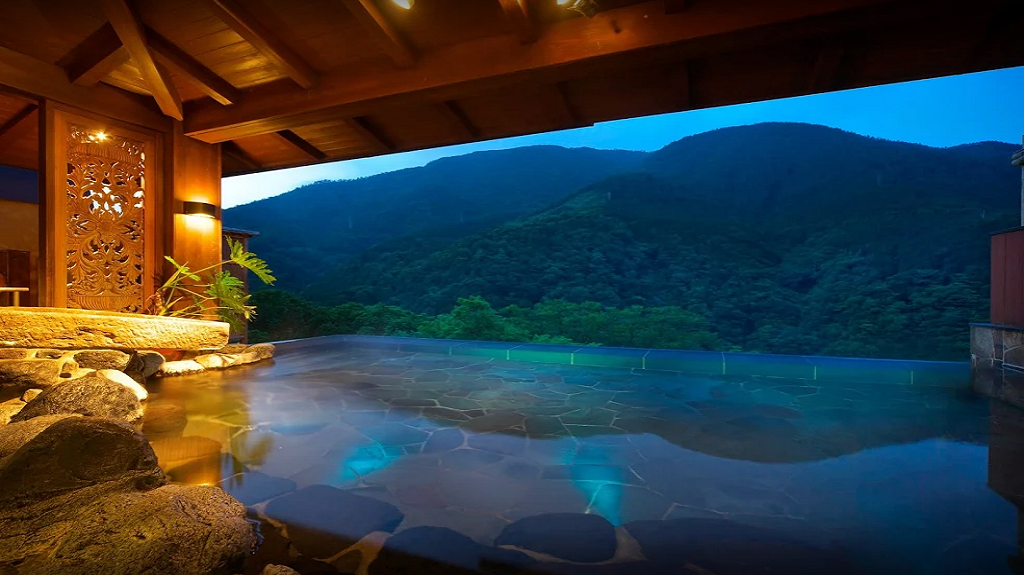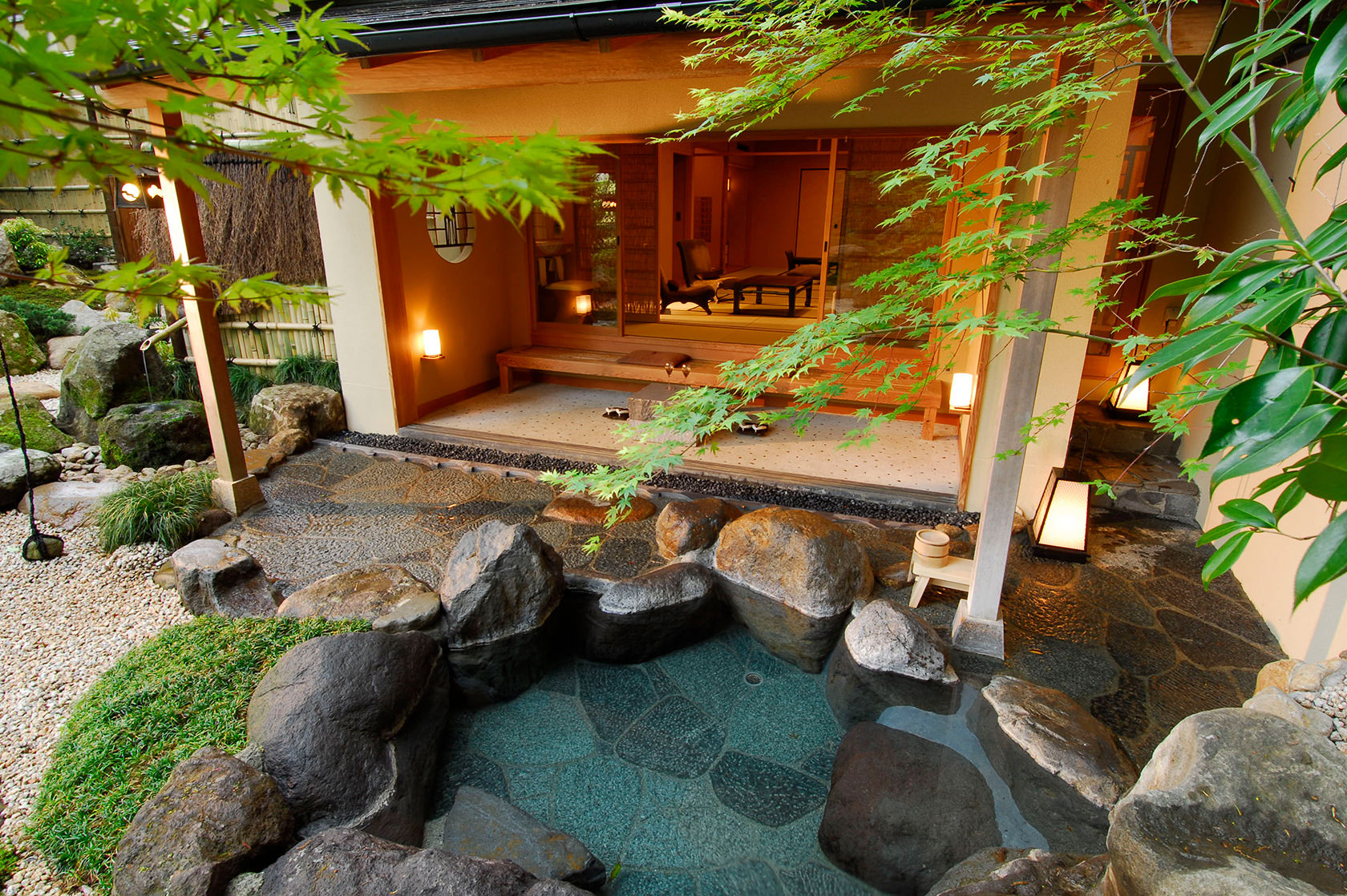
History of “Onsen”
“Onsen” is one of the distinctly native Japanese cultural aspects that did not originate from Greater China. Accounts of onsen bathing go back to Japan’s earliest historical records and have elevated the simple act of bathing in an “onsen” into almost a religious experience.
For many visitors to Japan, both Westerners and Asians alike, the onsen is a somewhat unfamiliar territory that many people opt to overlook. The combination of the bath etiquette, the fact that nudity (sometimes with the opposite sex) is involved, and even things like the water being hotter than most Jacuzzis make it easy for first-timers to justify skipping an onsen experience. A shame, since bathing in an onsen or hot spring is healthful, rejuvenating, and leaves one refreshed, relaxed, and clean. Onsen waters have healing qualities due to the various minerals within, particularly helpful in clearing skin and relieving aches and pains.
The country’s three oldest hot springs are believed to be the Dogo Onsen in Ehime Prefecture, Arima Onsen in Hyogo Prefecture, and Shirahama Onsen in Wakayama Prefecture. Based on ancient literature, some experts believe Dogo is 3,000 years old because pot chards from that time have been discovered in the area.
Before Western medicinal science spread in Japan in the Meiji Era (1868-1912), hot springs played more of a curative role. Buddhist monks played an important role in propagating their medicinal merits across the nation. During the wars in the 15th to 16th centuries, wounded warriors sought out the curative effects of hot springs.
Some mythology also links hot springs with physical treatment. Legend has it an injured white heron found Dogo Onsen and flew to the springs every day until its ailing leg was completely cured.
Buddhism and hot springs also share mythological links. Kukai, the founder of the Shingon sect in the ninth Century, is said to have discovered many hot springs across the nation, including the Shuzenji Onsen in Shizuoka Prefecture.
In addition to the mythology and beauty, these hot springs lie in the third-largest geothermal region in the world.
If harnessed to its full potential, electricity created from geothermal energy could one day replace Japan’s reliance on coal and gas. Currently, Japan generates just 0.3% of its electricity from geothermal resources, which experts say is a wasted opportunity during a time when countries are feverishly searching for new ways to generate eco-friendly materials and lower their carbon footprint.

How to Use a Japanese Bath
Wash Carefully
- Washing carefully BEFORE you enter the water is the most important part.
- Most Japanese baths will have small stools to sit on and a separate washing area away from the water. In very simple or very traditional baths, however, you’ll need to crouch by the edge of the bath and scoop bathwater directly out to rinse yourself — it’s okay in these baths if you don’t have soap.
- Most simple to medium-range onsen expect you to bring your own soap and face towel, and even at many fancy places you can often save 300-500 yen by bringing your own. At some high-end places, all towels, soap, shampoos, and other toiletries are included in the entry fee.
- In most onsen, taking photographs is not allowed
Entering the Water
- Use care and common sense about entering and exiting — many surfaces are slippery.
- Many onsen ryokan (hotels) have alternating male-only and female-only hours, so be attentive: the bath you entered the day before might be reserved for the opposite sex the following day.
- You will sometimes even see Japanese slopping their towels in the water or (horrors!) wringing them out in the bathwater, but this is very rude. ALWAYS make sure you’re as clean as possible before entering the water, and never rinse your towel in the bath or let it touch the water.
- Many people prefer to put their towel on their heads while bathing, but setting it on a rock or the side of the bath is acceptable too. If it accidentally slips into the water, wring it out outside the bath.
- Never try to peek through the partitions or around walls to see the other gender’s bathing area.
- Don’t swim in the bath…use it only for quiet soaking and contemplation.
- After leaving the bath, wipe off excess water and sweat as best as possible with your face towel before re-entering the locker room.
- Many onsen have rooms where you can lie down and nap, drink a cold beer or tea, or even sit in a massage chair. Don’t be afraid to take advantage of these post-bath relaxation opportunities!
Our Favorite Japanese Ryokans with Traditional Onsen
Gora Kadan
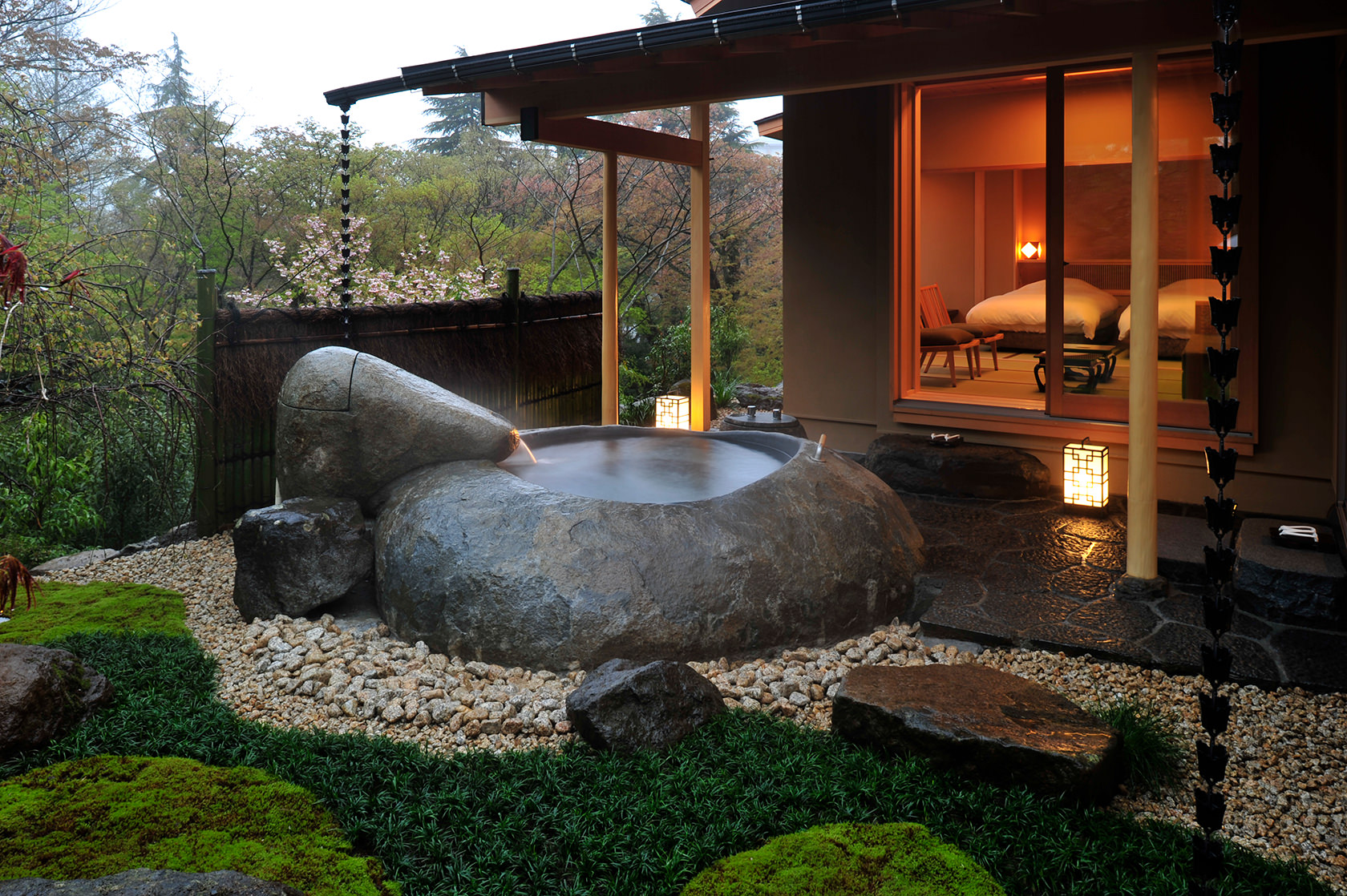
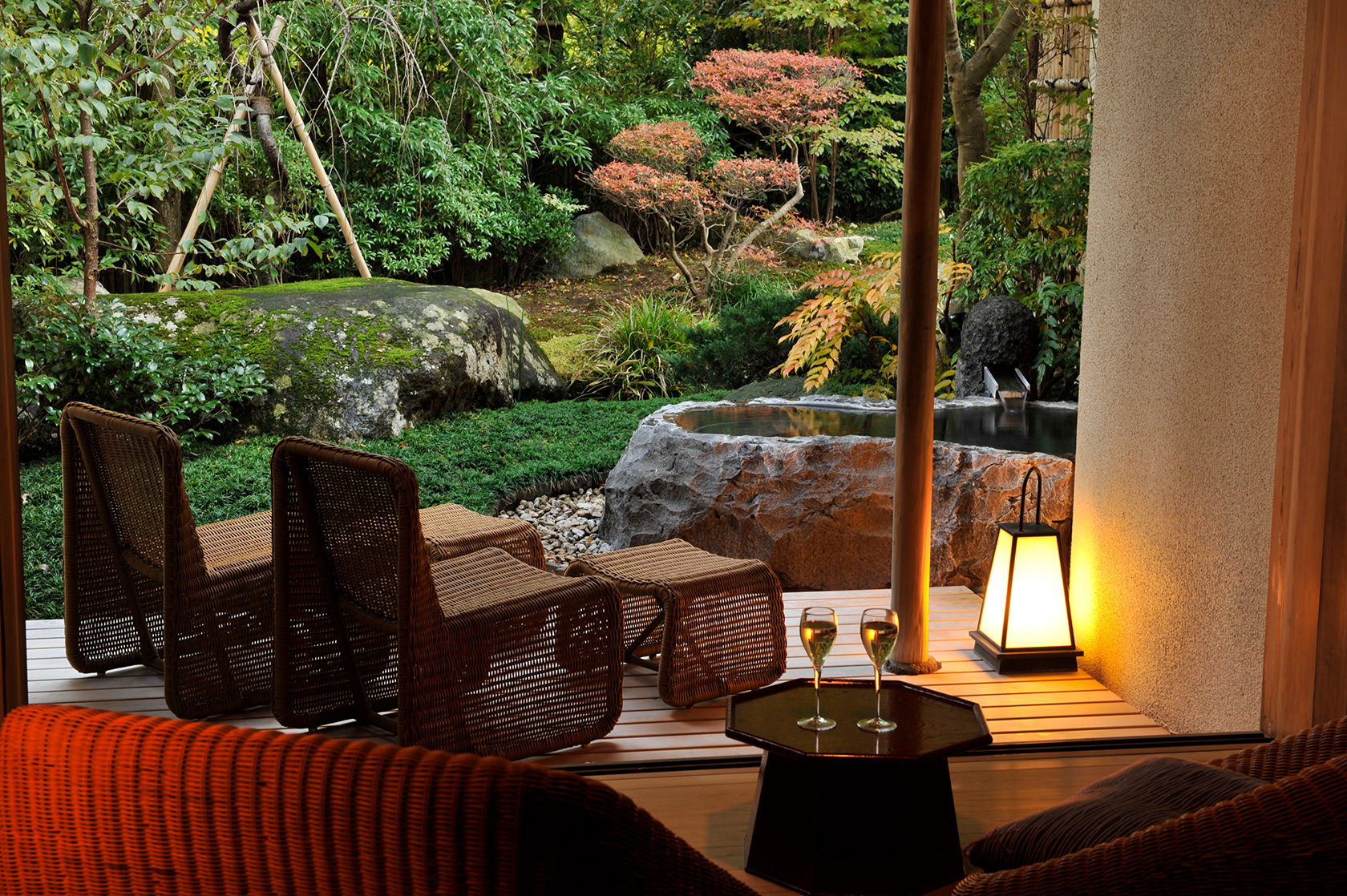

Kayotei Ryokan
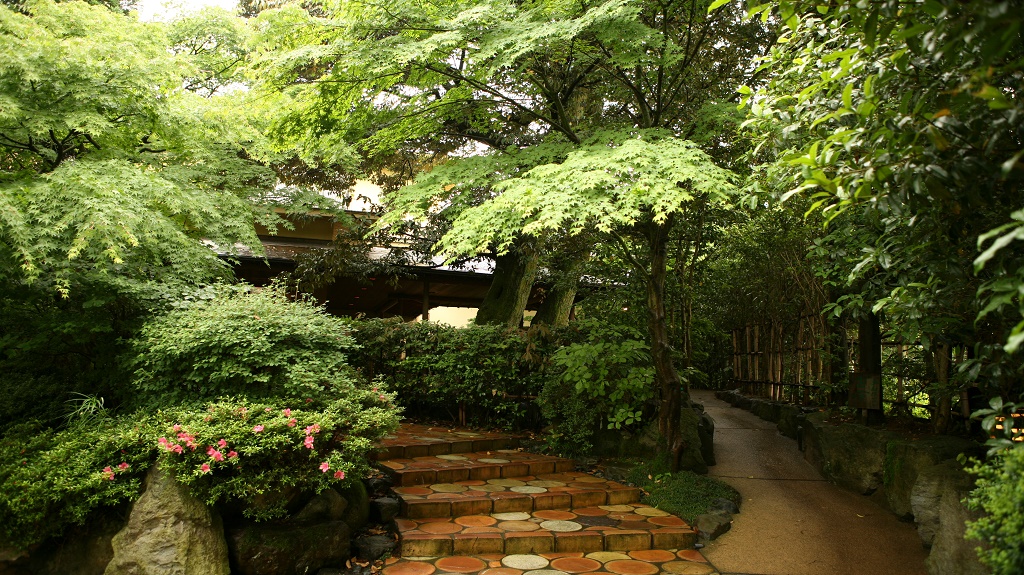


Hakone Ginyu Onsen Ryokan

